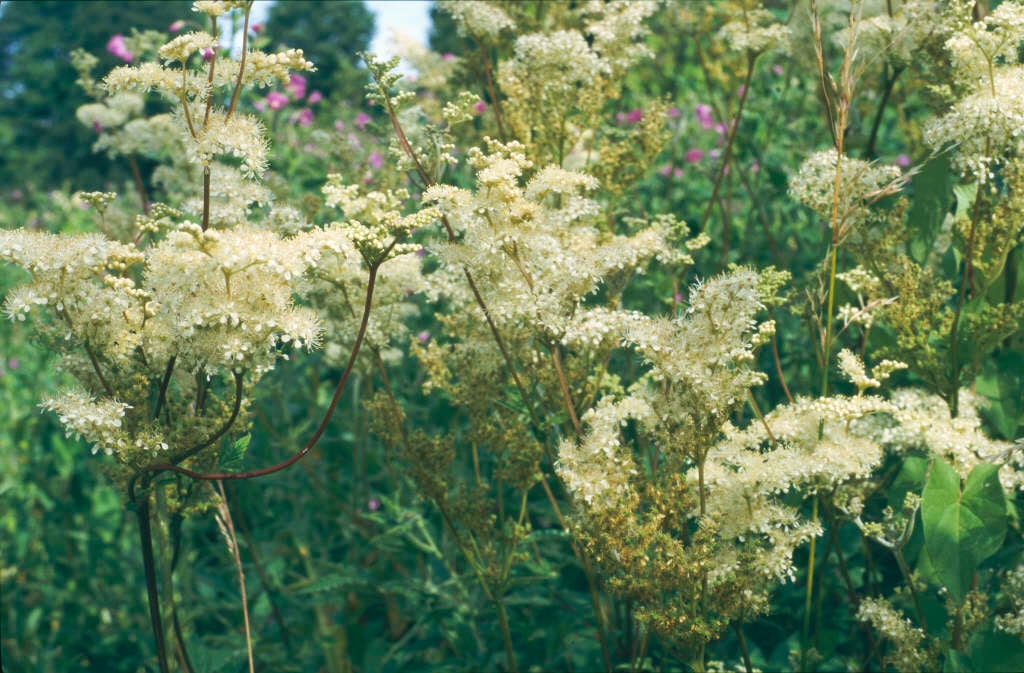Filipendula ulmaria
meadowsweet
A vigorous clump-forming perennial to 90cm tall, with pinnately divided leaves, the leaflets strongly toothed and often whitish beneath, and with fragrant creamy-white flowers in dense irregular terminal clusters on erect leafy stems in summer
Other common names
courtship and matrimonyhoney-sweet
see morelady of the meadow
maid of the meadow
meadow queen
meadow wort
queen of the meadows
bittersweet
bridewort
kiss-me-quick
sweet bay
brenhines y weirglodd
Synonyms
Spiraea ulmariaSize
Ultimate height
0.5–1 metresTime to ultimate height
2–5 yearsUltimate spread
0.5–1 metresGrowing conditions
Moisture
Moist but well–drained, ±Ę´Ç´Ç°ů±ô˛â–d°ů˛ąľ±˛Ô±đ»ĺpH
Acid, Alkaline, NeutralColour & scent
| Stem | Flower | Foliage | Fruit | |
| Spring | Green | |||
|---|---|---|---|---|
| Summer | Cream | Green | ||
| Autumn | Green | |||
| Winter |
Position
- Full sun
- Partial shade
Aspect
North–facing or West–facing or East–facing or ł§´ÇłÜłŮłó–f˛ął¦ľ±˛Ô˛µ
Exposure
Exposed or Sheltered Hardiness
H6Botanical details
- Family
- Rosaceae
- Native to GB / Ireland
- Yes
- Foliage
- Deciduous
- Habit
- Clump forming
- Genus
Filipendula are rhizomatous herbaceous perennials with pinnately divided leaves and large sprays of small rosy-pink or white flowers borne on leafy stems well above the foliage
- Name status
Correct
- Plant range
- Europe W Asia
How to grow
Cultivation
Grow in fertile, humus-rich, moist but well-drained or poorly-drained soil in full sun or partial shade
Propagation
Propagate by seed sown in containers in spring, or by division in spring
Suggested planting locations and garden types
- Wildlife gardens
- Cottage and informal garden
- Wildflower meadow
- Flower borders and beds
Pruning
Cut back after flowering
Pests
Generally pest-free
Diseases
May be susceptible to powdery mildews
Filipendula ulmaria
meadowsweet
911±¬ÁĎ
911±¬ÁĎ is the UK’s leading gardening charity. We aim to enrich everyone’s life through plants, and make the UK a greener and more beautiful place.
